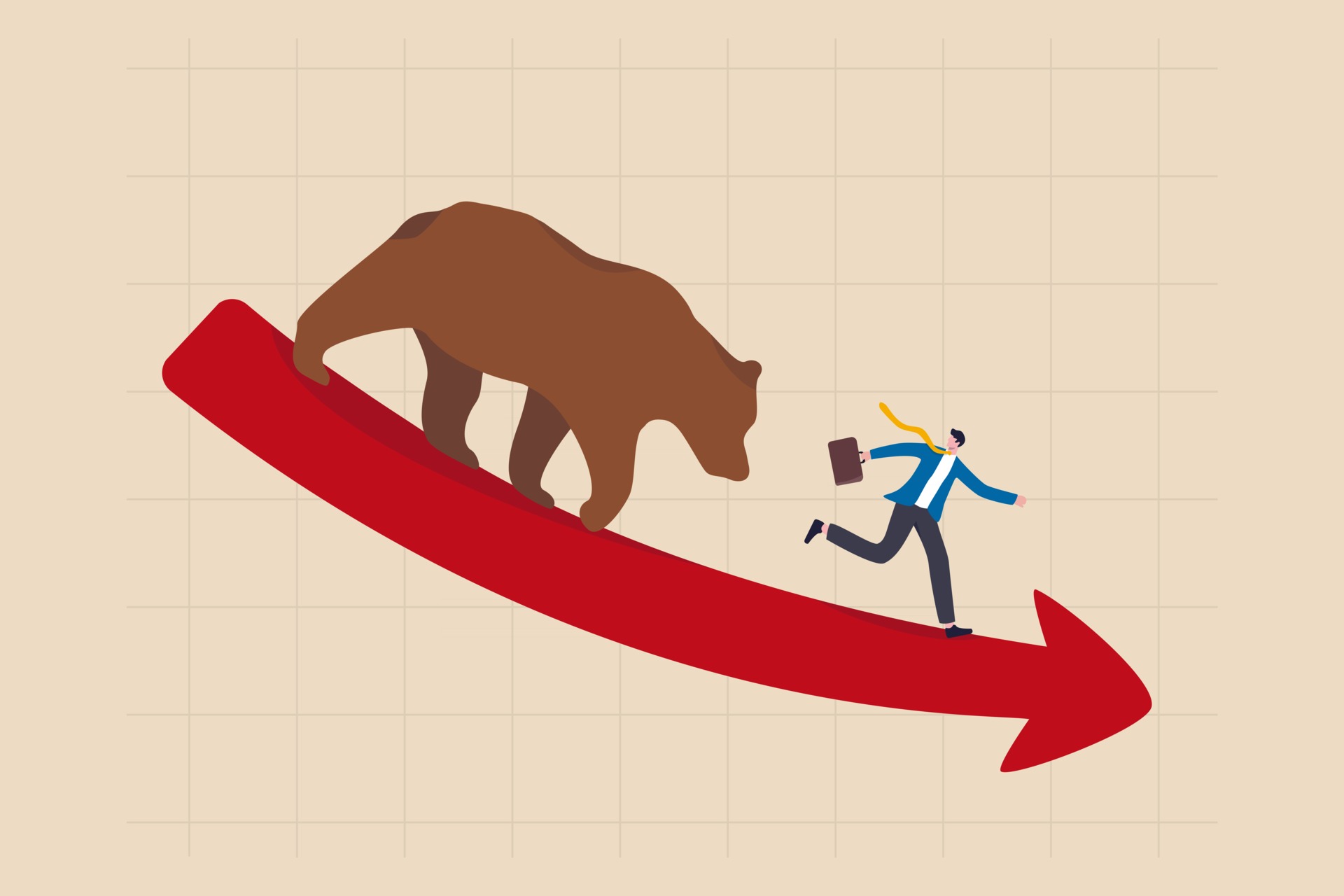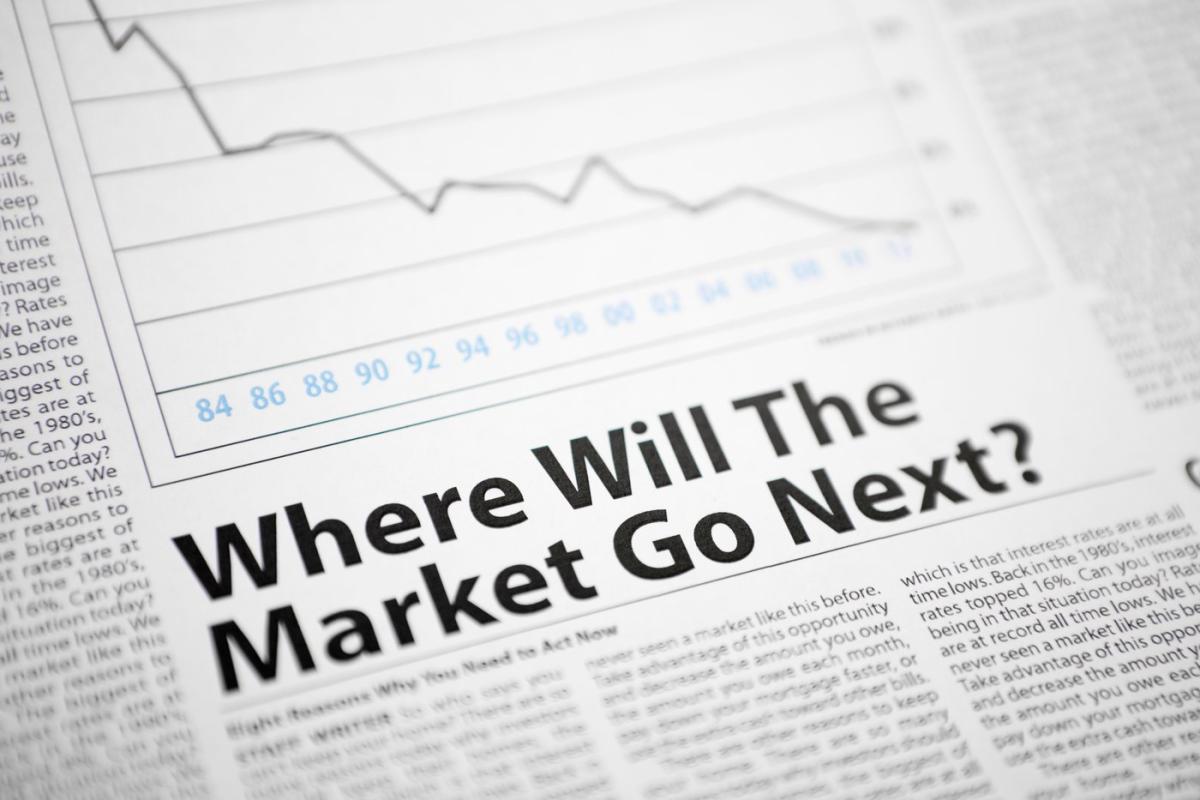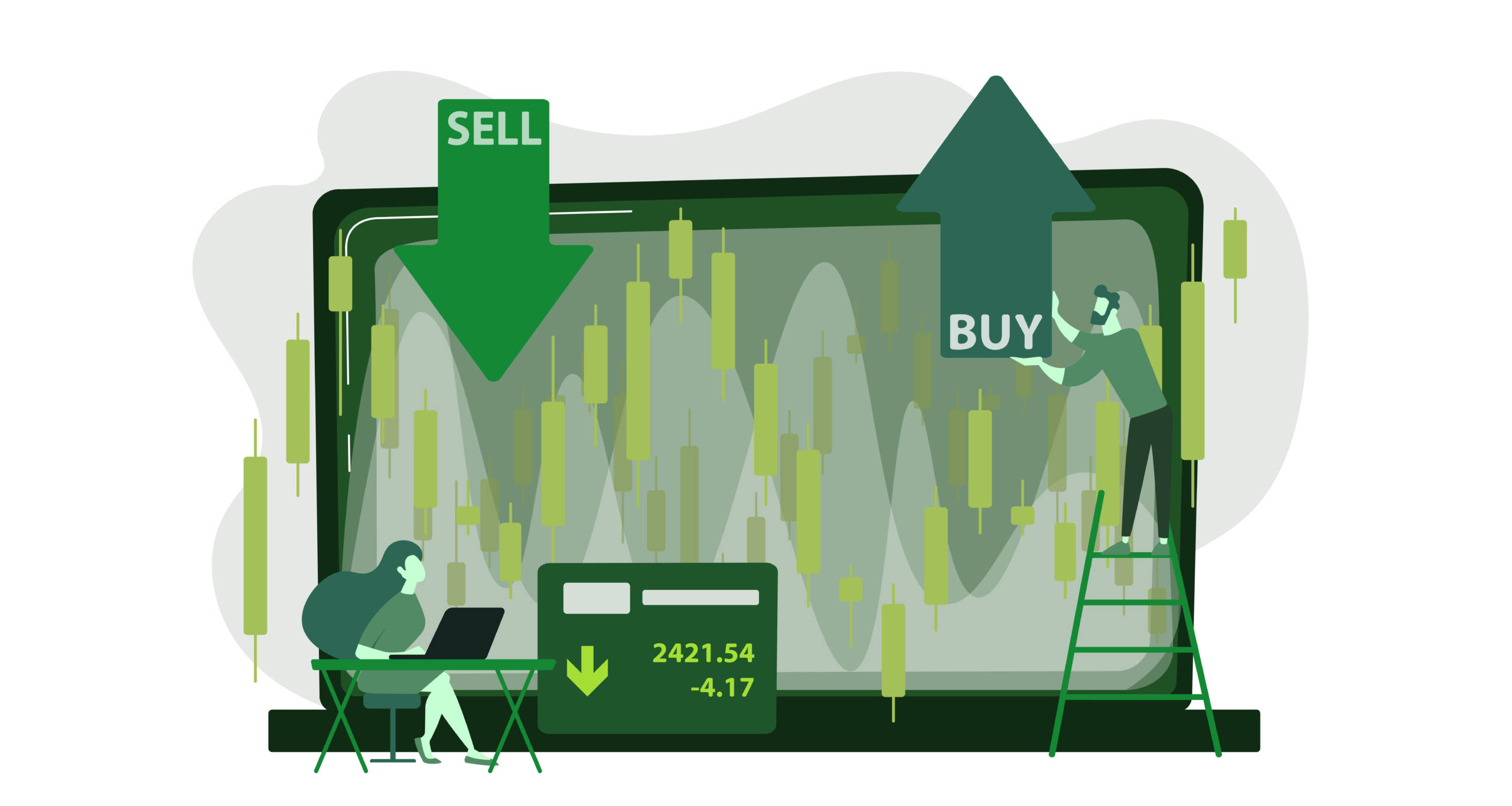During economic recessions, it is a common perception that all stocks decline, but historical data and market analysis reveal a more nuanced picture. While it’s true that the broader market tends to experience significant downturns during recessions, not all stocks uniformly follow this trend. For example, during the 2008 financial crisis, the S&P 500 dropped by nearly 57% from its 2007 peak to the 2009 trough, reflecting widespread market losses. However, certain sectors like utilities, consumer staples, and healthcare often show resilience, and sometimes even growth, due to their essential nature.

Why Stocks Often Fall During Recessions
Recessions mean that activity across multiple sectors is shrinking. Throughout history, as the GDp goes down and unemployment rises, consumer spending decreases, and many companies earn less money than usual. Throughout the Great Recession, which began in 2008, a lot of companies’ stock prices went down. For instance, from the October 2007 peak to the March 2009 trough, the S&P 500 fell about 57%. The falling stock prices at that time were an indicator of investors’ panic and deterioration of economic outlook.
Not all Stocks fall during the Recession
Even in times of recession, many companies’ stock prices don’t fall. Defensive sectors such as utilities, consumer staples, and healthcare often outperform the broader market because they are necessary regardless of economic circumstances. During the 2001 recession, utility stocks outperformed technology stocks, which were more vulnerable to the bursting of the dot-com technology stock bubble. This means that even in recession, when spending decreases and the economic outlook is worsened, some stocks can even rise because of their resistance to economic fluctuations.
Some Businesses Profit during Recessions
Retailer and repair services and many other industries benefit from recessions because they are countercyclical. This means that when Fujitsu’s stock price is falling down other computer repair companies that buy the same spare parts can become a better stock market choice. Walmart’s stock rose in the 2008 recession because in difficult economic times people choose options with better prices. This shows that the stock market is affected by different trends based on the type of business so the recession doesn’t ensure the falling prices.
Investors’ Expectations
The stock market is also affected by investors and their current and future expectations. The stock market always paces the recession because it reacts to the news. Therefore, at the beginning of the recession, the stock market experiences a very profound fall that might be irrational and caused by panic. As the recession progresses, the news turns more positive, and the stocks start to rise even before the economy starts to recover. For instance, in 2009 the stock market started to rise in March, even though the recession ended only in June.
How Does A Recession Affect The Stock Market?
Recessions usually represent a period of broad economic activity decline, and the stock market, as a reflection of economic expectations, reacts to them negatively. Overall, the reasoning for this is related to multiple interdependent factors influencing the investor sentiment, the company’s operational performance, and economic indicators.
Initial market reaction
Firstly, the stock market tends to decrease aggressively before the onset of the actual recession. Investors consistently sell their stocks, assuming that downturning earnings and a slower economic increase would inevitably lead to the loss of their share values. For instance, already in early 2008, after a series of the financial crisis that ultimately began in 2007, the Dow Jones Industrial Average targets have plummeted by more than a half compared to their 2007 maximum levels. As such, the call here was driven by anxiety and seeming uncertainty as the investors struggled to realize the scale of the upcoming recession and the linages underneath.
Corporate earnings and stock prices
Secondly, the broad economic recession anticipates the corporate earnings to decrease due to less consumer spending and business investments. Stock prices are aimed to decline to reflect the new anticipated earnings situation, hence contributing towards the total stock market decline. Overall, many prominent tech companies, for instance, failed to reach the stock’s max values set during the dot-com bubble burst in 2000 and had their future earnings targets cut due to the concrete economic reality exposure.
Sector-specific
However, not all sectors usually unilaterally decline due to recession. In particular, one may observe utilities, consumer staples, and health care stocks tend to decrease, yet at a slower pace compared to the overall market as these are essentials sectors not linked to the economic reality. Meanwhile, for luxury goods, finance, or technology, these companies might see a greater reduction compared to the average. For instance, during the 1990-1991 recession, consumer staples stocks declined more slowly relative to their aggregate decline, ultimately allowing investors exposed to these fields to partially address the losses.
Long-term
Finally, as the stock market often expects an upcoming recession, it reduces the impact if severe policies and administrations consider different fiscal stimulus measures as practiced in previous recessions . Moreover, long-run investors can buy underpriced stocks with an anticipated increase in the value of the stocks after the recession.
What To Expect When Investing In A Recession
Investing during a recessionary period has various opportunities and challenges. The historical data and economic trends seem to provide a guide on what to expect concerning volatility, the performance of different sectors, and returns that can be accrued.
Market Volatility and Investor Sentiment
Volatility is higher during economic recessions. The swings in the market can be abrupt and significant. For example, during the 2008 financial crisis, daily stock market moves of over 5% became relatively common. The high volatility during recessions can be attributed to investor sentiment. The same investors who panic can later be seen trading highly bullish due to positive news reports. Notably, the high volatility results due to emotional investing. This implies that the market can either under or overreact.
Sector of Interests
During recessionary periods, it is critical that investors put all their focus on the sectors that are usually resilient to the downturns of the economic cycles. This includes the sectors that are always less affected, or they tend to moderate trail the business cycle such as utilities, consumer staples, and healthcare. These are industries whose products will always be in demand regardless of the economic status, such as food, water, and housing. For instance, during the recession of the early 2000s, the S&P 500 healthcare sector fell by only 0.6% as the market got affected by the 3% decline.
Sectors with Opportunities
However, the cyclical and value sectors such as technology and consumer discretionary tend to be severely affected and hence offer an opportunity to earn long-term returns. Purchase of shares within these sectors during an economic recession at the time when the market is at its peak offers an opportunity to experienced tremendous returns post-recession. This was seen after the 2009 recession, whereby the technology sector helped the market recover . Companies such as Amazon and Apple saw their share price appreciate by more than tenfolds.
Business Cycle Impact on Stock Market Performance
Indeed, stock market valuations tend to decline as the state of the economy goes down and vice versa. For an example of a cycle, let me describe what happened to stock valuations during the great recession in 2008–2009. It is a well-known fact that in the course of a recession, US real GDP decreased.

At the time, the implications for stock markets were negative, as a recession entails decreasing corporate profits. Thus, it can be expected that the valuation of stocks would undergo a considerable drop. The S&P 500 peaked a little above 1500 in 2007.
The negativistic fears of the oncoming recession materialized into panic selling leading to the stock valuation hitting the bottom at around March 2009. By that time, the S&P 500 had reached the level of 660–664. Thus, the discrepancy between the peak and the trough reached three-quarters in magnitude, or, in other words, stock values were down by around three-quarters. The recovery part of the cycle followed, during which the stock valuation rebounded along with the economy, explains Lawrence .
To be more specific, during the rebound, stock markets at first exhibited heightened growth volatility. Later, they surged dramatically and rapidly, for the greatly improving outlook resulted in the rebounding of corporate profits and the trade balance. From that point onwards, stock market valuation started out on a three-and-a-half-year surge.
Stage 1: Peak
The peak of the business cycle relates to the moment when the economy operates at its full potential. Accordingly, such a situation presupposes the highest employment, the largest amount of consumer spending, and the peak of business investment . In most cases, the peak is also the time of prosperity because of the high investor confidence resulting in the increase of stock prices and the completion of the overbought market stage. However, the peak is also the preparation period for the future recession because of the accumulation of the excesses.
In general, at the moment of the peak, some technologies that were previously considered useless or too expensive receive a wide response leading to irrational excitement about the future boom. An example of this situation can be observed in the 90s of the last century when the overall increase of the technologies of the information era led to the dot-com bubble. As a result, in January 2000, the index of the stock prices in the NASDAQ composite reached the highest level of 5,132.529, and, generally, the information technology sphere faced an increase in at least 6,000 companies until the year 2000.
At the same time, the stock may be in great danger at the moment of the peak because of their overestimation and irrational mood of the market participants. For example, in the closest past, in 2007, the peak of the economic and stock market cycles was identified, and the S&P 500 index of the stock prices reached its highest as 1565. In this case, the cheap credit and speculative real estate investments were the factors of the high indexes. However, beginning with February 2008, the real problems of the economy were identified and the index fell by December 2008 to 876.77 points in reaction to the financial crisis.
Stage 2: Recession
Recession is a point in the business cycle when economic activity contracts, consumer spending declines, and the rates of unemployment go up. The phenomenon bears a massive effect on the stock markets, causing respective, broad-based negative market reactions and features of volatility. Of all the stages of the business cycle, stock markets are the most sensitive to recessions. The most telling of the latter is the 2008 financial recession, which resulted in the most substantial stock market fall ever registered. Its eonset was directly linked to the stock markets’ loss in confidence following a series of milestones representing the course of the fallen financial sector.
-
The collapse of major financial institutions
-
The rise in mortgage defaults
-
The fall of 50.0% of the Dow Jones Industrial Average from its 2007 highs to the march 2009 lows.
A shortage of confidence ensued due to the fall in the financial system and the need to cover the resultant losses because of massive liquidations. Finally, the estimated earnings per share of the companies were also overrated.

Recession hurts the finance, real estate, and consumer discretionary sectors the most during the recession phase. The finance stocks suffered the most in the 2008 recession because of the sector’s exposure to subprime mortgages and toxic disregard. Real estate and consumer discretionary stocks were the runners-up. However, utility and consumer staple sectors, which are less susceptible to the cycles, were also negatively impacted, though mildly. At that point, the investor cannot avoid suffering from loss due to the high volatility related to recession onset. Moreover, there is a flight to liquidity, back into fixed markets, from the equity market. The increase in the demand for U.S. treasuries was one of the indicators of the 2008 recession. Lastly, stock recessions are opportunities in that it would be an economically viable venture to cheaply acquire stocks trades on. Technologies stocks were the most hit during the 2008 financial recession. As noted months after the recession, the stocks rose remarkably, putting them in even better spots where their shares would demand similar or resources greater than those raised.
Stage 3: Trough
For stock markets, the trough represents one of the most essential phases of the business cycle. This is because it is the point where the adverse trends in the economy are no longer capable of worsening and the next phase, the recovery, is bound to follow. In this phase, stock markets are characterized by their lowest valuations. In the case of the financial crisis of 2008, the trough for U.S. stock markets was in March 2009. In this month, the Standard and Poor’s 500 Index bottomed at 666 points, down from more than 1,500 points where it had been in 2007 . This position was so significant because, from this point, the market started growing and did so for a decade.
The most bearish of sentiments are witnessed at the trough phase of the business cycle. As such, the atmosphere around the market is usually full of fear, uncertainty, and, in many cases, a capitulation when the panic sellers are gone. In this phase, the most pessimism is witnessed. Paradoxically, the trough stage is one of the best periods of buying for contrarian investors. This is because at such a stage, it is clear that there is nowhere else to go but up. The real advantage of buying at this point is realized when the market starts to recover. This results in the highest returns as the assets that were purchased on the cheap begin to climb up. For example, many investors who entered the market at the trough point at the start of the recovery in 2009 had their assets multiply severalfold . Stocks that had been significantly devalued relative to their peaks started climbing up to the advantage of the investors who had purchased them at the trough. Examples include the likes of Amazon and Apple.
Stage 4: Recovery and Expansion
The recovery and expansion phase of the business cycle is a turning point when economic activity gradually begins to improve from its lowest ebb and continues to grow. This phase has a significant effect on the activity of the stock market since investor expectation is building, core corporate profit growth, and market indices often begin to increase in value, gaining tens of percent.
Generally, during recovery, the stock marketprovides an exceptionally significant return since the economic indicators are drastically improved. For instance, after the US stock markets reached their lowest point in 2009, a long-term uptrend was opened on them, which has not stopped to this day. The growth of the S&P 500 from the trough level in March 2009 exceeded 400% by 2020 due to strong corporate profits and sales growth, saving and loan interest reduction by several percentage points, and central bank injection of liquidity in unprecedented quantities .
At this stage, the reinvestment strategy of the investors changes: previously, the financial world was focused on the buy-up of stable defensive utilities and consumer goods, whereas at the time of the market recovery investors reoriented themselves to more cyclical technology, consumer goods, and large industrial companies. The business climate helps to promote the production of technology companies and consumer spending growth. Apart from that, recovery expansion often promotes the emergence of new leading companies and inventions. Thus, during the recovery from the Great Recession, such comanies as Tesla and Netflixeverged, they have become the flagships of the new automotive and entertainment industries.






